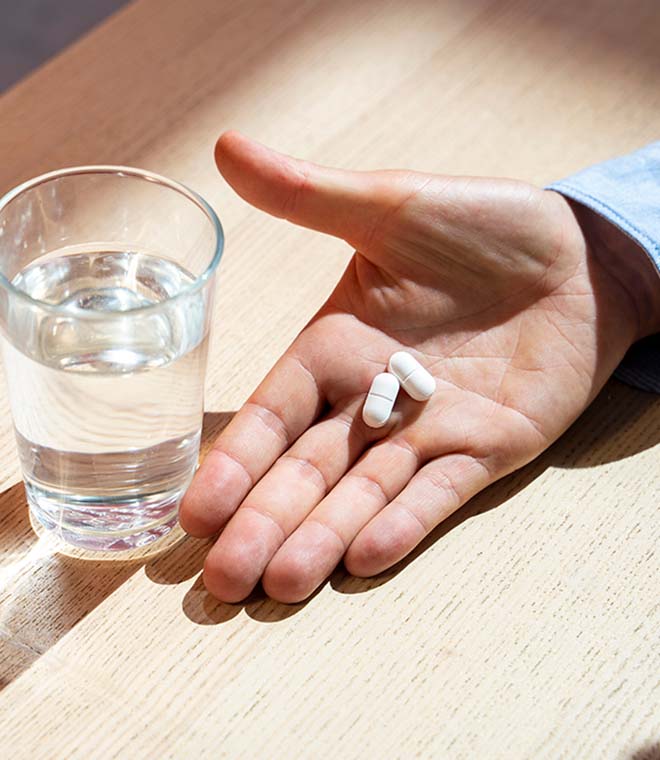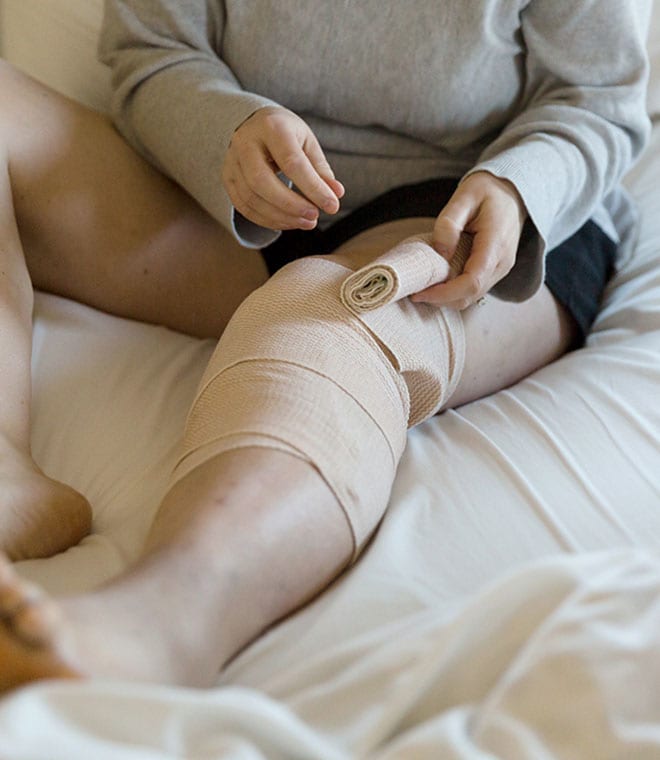Health
What is tendinitis?
By Nancy Kupka, PhD, RN Apr 08, 2024 • 6 min
Tendinitis is an acute inflammation of a tendon that lasts for a period of
10 days or less. It’s a common condition affecting many people. The good news is there are quite a few treatment options and therapies available to help reduce the pain from tendinitis.
What are tendons?
Tendons are fibrous connective tissues that attach muscles to bones or other structures, such as the eyeball. Tendons are responsible for moving a bone or structure.
What is tendinosis?
Tendinosis is different from tendinitis. It’s characterized by chronic inflammation of a tendon.
What is Tendonitis?
Tendinosis is different from tendinitis. It’s characterized by chronic inflammation of a tendon.
What's the difference between tendinitis and tendinosis?
The difference between tendinitis and tendinosis is time and approach to therapy. Tendinitis can take up to 10 weeks to heal, while tendinosis may take up to nine months. Physical therapy for tendinosis is often warranted.
Although both tendinitis and tendinosis are often caused by sudden injury, using any muscle repeatedly in the same action, or overusing it, can lead to either condition. People at risk for both conditions are those with jobs that require repetitive use of a muscle group or heavy lifting. People who participate in sports, such as tennis and running, are also at risk.
Tendinitis and tendinosis can also be caused by bad posture or body mechanics, congenital deformities and illnesses, such as arthritis and diabetes.
General symptoms and treatment
Tendinitis symptoms include tenderness or pain and possibly swelling at or around a tendon.
Treatment for any kind of tendinitis includes rest, immobilizing or supporting the joint or area, and applying ice packs. Aspirin, naproxen (Aleve) and ibuprofen (Advil) are used to reduce swelling.
For tendinosis, physical therapy, which includes range of motion exercises, is also part of the treatment plan. If pain is constant and severe enough, a cortisone injection into the joint can help relieve symptoms.
Tendinitis by area of the body
People commonly experience tendinitis in their shoulder (rotator cuff or biceps), elbow (lateral epicondylitis), wrist (de Quervain's tendinosis), hip (hip flexor), knee (patellar) or ankle (peroneal).
Rotator or bicipital cuff tendinitis
A group of muscles called the rotator cuff and the biceps tendon keep your shoulder stable. When any of these tendons become inflamed, it is called rotator cuff tendinitis or bicipital tendinitis. If conservative treatments do not improve symptoms, surgery may be considered if the rotator cuff or biceps tendon has been partially or completely torn. Surgery can repair the damaged tendon or tendons and can remove inflamed, fluid-filled sacs called bursae that may also be irritating the shoulder.
Patellar tendinitis
The patellar tendon works with the muscles in the front of your thigh to straighten the leg. Inflammation of the patellar tendon, called patellar tendinitis, weakens the tendon. It may also cause small tears, called ruptures.
Patellar tendinitis is most common in people who do a lot of running or jumping. Although more common in runners, it is sometimes referred to as "jumper's knee." Patellar tendinitis treatment includes limiting activities that stress the knees, knee support, applying ice and using over-the-counter nonsteroidal anti-inflammatory pain relievers, like aspirin, ibuprofen or naproxen.
Corticosteroid injections to treat patellar tendinitis have been linked to increased tendon weakness and likelihood of tendon rupture. These injections are typically avoided around the patellar tendon.
Lateral epicondylitis or tennis elbow
A condition called lateral epicondylitis, or tennis elbow, involves both the muscles and tendons of the forearm, specifically the extensor carpi radialis brevis (ECRB) muscle, which stabilizes your wrist when you straighten your elbow. When the ECRB is weakened from overuse, microscopic tears form in the tendon where it attaches to the lateral bone. The fact that the tendon also rubs against little bumps on the bone can cause gradual wear and tear of the muscle over time.
You do not have to play tennis to have tennis elbow. Painters, plumbers, carpenters, autoworkers, cooks and butchers are prone to tennis elbow. This is because of the repetitive use of the ECRB and heavy lifting required in these occupations.
There is usually no specific injury associated with the start of symptoms. The signs of tennis elbow develop gradually, usually beginning as mild and slowly worsening over weeks and months. Common tennis elbow symptoms include pain or burning on the outer part of the elbow and weakened grip strength. Symptoms are often worse with forearm activity, such as holding a racquet, turning a wrench or shaking hands.
Wrist (de Quervain's tenosynovitis) and hand tendinitis
Tendinitis of the wrist and hand are common and include a variety of diagnoses, such as de Quervain's tenosynovitis, Dupuytren's contracture and trigger finger.
De Quervain's tenosynovitis occurs when the tendons around the base of the thumb are irritated or constricted. Wrist tendinosis symptoms are particularly noticeable when forming a fist, grasping or gripping something or when turning the wrist. De Quervain's tenosynovitis may be caused by overuse, but it is also associated with pregnancy and rheumatoid disease. Excessive texting is also a risk factor for de Quervain's due to overuse of the thumbs.
Wrist tendon pain may be felt over the thumb side of the wrist and can travel across the forearm. The pain may appear either gradually or suddenly, and it’s usually worse when the hand and thumb are in use. This pain is especially noticeable when forcefully grasping objects or twisting the wrist. In addition, swelling and fluid-filled cysts can be found on the thumb side of the wrist, and a catching or snapping sensation may be felt when moving the thumb.
Similarly, tendinitis of the hand and palm develops gradually, first presenting as a swollen or inflamed tendon in the hand. Problems with tendons in the hand are seen most often in people who work in assembly lines and meat processing, as well as those who regularly knit, type or play the piano.
What is trigger finger?
Trigger finger is a painful condition that starts when the tendon develops a knot or its lining becomes swollen. As a result, the tendon gets stuck, causing pain and the sensation of catching. Your finger or thumb "locks," and you cannot straighten or bend it further. Sometimes, there is a snapping sensation or sound when you do bend it, which is often associated with pain radiating to your palm or toward the end of your finger or thumb. You may find that your finger or thumb is locked when you first wake up, and then it gradually releases over the course of the day, or you can release it by massaging the finger or thumb at its base. A vicious cycle develops: The more often the tendon catches, the greater the swelling and irritation, and the greater the swelling and irritation, the more the tendon catches.
What is hip flexor tendinitis?
Hip flexor tendinitis is pain, swelling or inflammation of the muscles at the front of your thigh that help you lift your leg and knee. The front of your hip may be painful or tender, and the pain may worsen when you bend at the hip. You might even hear or feel a click or snap as the tendon rubs across your hipbone as you walk.
To prevent hip flexor tendinitis, warm up and stretch before working out. Also, work out regularly rather than just once in a while, and gradually increase the duration and intensity of your workouts. Do not push yourself too much. Stop if you feel pain.
Peroneal tendinitis
The peroneal tendon is the tendon on the outside of the ankle, which runs to just behind the outer calf bone called the fibula. It stabilizes the bone and allows you to turn your ankle away from your body and point your toes and feet downward.
Similar to other forms of tendinitis, the causes of peroneal or ankle tendinitis include prolonged, repetitive athletic activities, injuries resulting from turning your ankle inward and anatomical abnormalities. Peroneal tendinitis symptoms include peroneal tendon pain or aching and sometimes swelling. Specifics on how to treat peroneal tendinitis include nonsurgical treatments such as physical therapy, immobilization and anti-inflammatory medications. Left untreated, peroneal tendon disorders can lead to persistent ankle pain and functional problems.
Foot tendinitis
Pain or weakness in the foot or ankle are the most common symptoms of foot tendinitis. Other symptoms include achiness, snapping sounds, thickness at the heel or bottom of the calf muscle, flat feet or pain on the inside or back of the ankle. The tissues in your foot will heal over time. Stay off your feet for a few days and slowly work back up to your usual level of activity. If you engage in high-impact activities, such as running, try other activities that place less strain on your foot, like swimming or cycling.
The take-home message
Whatever your level of activity, it is important to increase the intensity and duration of your sessions gradually. If you develop tendinitis or tendinosis, rest and consult with your healthcare provider about how to address the problem. They may recommend using nonprescription anti-inflammatory medication, icing the area and using a supportive bandage. As you increase activity, remember to stretch and warm up your muscles to help prevent pain and injury.
Clinically reviewed and updated April 2024.
Sources:
- https://medlineplus.gov/ency/imagepages/19089.htm
- https://www.ncbi.nlm.nih.gov/pmc/articles/PMC3312643/
- https://www.arthritis.org/about-arthritis/types/tendinitis/
- https://my.clevelandclinic.org/health/diseases/shoulder-tendonitis
- https://orthoinfo.aaos.org/en/diseases--conditions/patellar-tendon-tear/
- https://www.health.harvard.edu/pain/taming-tendinitis-in-the-knee
- https://orthoinfo.aaos.org/en/diseases--conditions/tennis-elbow-lateral-epicondylitis/
- https://orthoinfo.aaos.org/en/diseases--conditions/de-quervains-tendinosis/
- https://www.ccohs.ca/oshanswers/diseases/tendon_disorders.html
- https://www.health.harvard.edu/newsletter_article/tendon-trouble-in-the-hands-de-quervains-tenosynovitis-and-trigger-finger
- https://intermountainhealthcare.org/services/orthopedics/services/hip/hip-flexor-tendinopathy/
- https://pdfs.semanticscholar.org/582f/f5faeb4740f31b61ec24d4c7ea533cdb35c3.pdf?_ga=2.227817117.1895001717.1655562019-1324388679.1655562019
- https://intermountainhealthcare.org/services/orthopedics/services/foot-and-ankle/foot-tendonitis/



